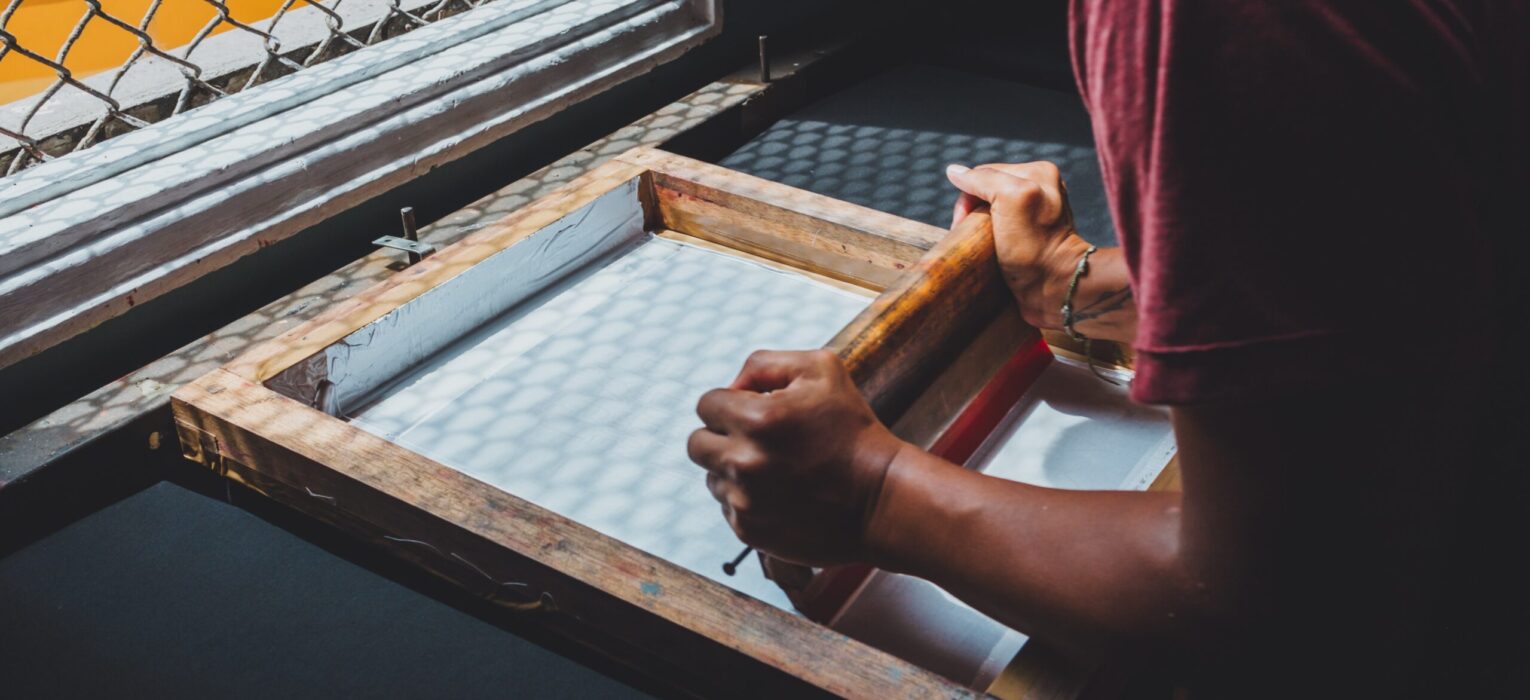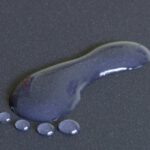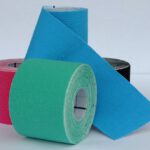Screen printing on fabric is one of the most popular and versatile technologies for applying images to a variety of materials, from cotton and knitted fabrics to nylon and polyester. Screen printing is used for almost all types of promotional products, from T-shirts to umbrellas. When deciding on such printing, a technology is selected that allows for high-quality color printing with a guarantee that the drawings will be clear, contrasting and resistant to abrasion.
What is screen printing on fabric?
Screen printing is a method of image reproduction using a template, i.e. a special printing plate, through which the paint penetrates the printed surface in those places that correspond to the printing elements. The thickness of the paint layer can vary from 10 to 100 microns, which ensures high image quality. Only in screen printing can fluorescent inks be used to achieve various special effects. You can adjust the thickness of the layers of paint, create a relief and a volumetric image.
- https://www.alerodzinka.pl/czy-warto-korzystac-z-namiotu-na-weselu/
- https://www.eventualnosci.pl/jak-programowac-karty-rfid/
- https://www.sentinels.pl/doradzamy-jak-znalezc-dobra-kosmetyczke/
The image made in the technology of screen printing on the fabric perfectly tolerates frequent washing. Does not fade over time. In other words, its durability is guaranteed. In addition, screen printing on fabric is slightly cheaper than other printing methods, regardless of size. It is permissible to apply a pattern to impregnated products: jackets and windcheaters.
- fotowoltaika24.biz.pl/oferta/fotowoltaika-dla-domu/
- klimatyzacja-klima.waw.pl
- sklep-kosmetyczny.com/metoda-hybrydowa-c-792_1_24.html
Screen printing: key benefits of screen printing on fabric
Screen printing on fabric is popular and despite the fact that many of the latest technologies for transferring images to textiles are presented on the market, screen printing is appreciated for the following reasons:
- Performance. This printing method provides the best possible performance at a low cost per page.
- Great opportunities. Any fabric, both natural and synthetic, can be used as a carrier.
- Ecological purity. In the printing process, environmentally friendly and safe dyes are used, which are characterized by high resistance to external factors.
- Durability. After many washings, the screen-printed image retains its original shade and clarity.
- The cost of screen printing on fabric is low, and the main part of the cost goes to the production of a stencil for a future project.
Screen printing technology on fabric
Screen printing on fabric is used to print various inscriptions, logos, numbers, drawings and photographs. It is perfect for printing on T-shirts, scarves, bandanas, sweatshirts, promotional bags. This is a unique technology of applying the image, in which the paint is applied to the material by squeezing through the screen printing plate (mesh).
The process of screen printing on fabric consists of several stages:
- First, the layout of the project is divided into colors, and with the output photo, they are done separately for each color.
- Then templates (printing plates) are made depending on the number of colors to which the images are exposed. The paint should pass through the mesh only in strictly defined places.
- The printing plates are installed on the carousel and aligned.
- The fabric is placed on the machine table, the shape and paint of one color are laid out on it, after drying the second and so on until all colors are applied.
- The final step in screen printing on fabric is curing the ink in a tunnel dryer where it is finally cured
The decorative effect of screen printing on fabric
The advantages of this technology are the variety of colors and textures, the possibility of printing on a large area and the durability of the image. Plastisol and water-based inks are used for screen printing on fabrics. The first ones are more intense, while the second ones are considered more environmentally friendly, they are less expressive, but they also look very interesting. Metallised, luminescent or fluorescent plastisol inks allow for a variety of special effects. Fluorescent paint glows under UV light.Thanks to the metallised paint, a gold or silver surface can be obtained for application. Water-based inks penetrate the fibers of the fabric, while plastisol envelops these fibers to form a thin film on the product. Fluorescent inks create extremely rich images that look great in daylight and are also activated by UV light.
The fabric with this print is a clear example of the wonders of physics: the paint absorbs the sun’s energy and converts it into visible parts in the color spectrum. Foiling allows you to create prints with an iridescent effect on textiles. The colorless substrate is screen-printed on the fabric, a sheet of foil is applied on top and fixed with a heat press. Foil prints look great on T-shirts. Shades of gold, silver and copper are used to create unusual and exciting images. Metallic paints perfectly match textiles, are soft and shimmer in the sun. These inks can be used for simple lettering and logos, as well as complex, detailed gradient images on T-shirts. The possibility of using screen printing on fabrics is huge, it takes a little creativity and professional knowledge.








